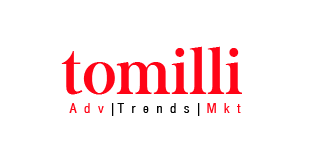Today’s healthcare landscape is complex. Staying relevant requires rethinking how we connect, communicate and create. During IPG Health’s Next: Innovation Week, Alec Pollak, Group Director of Engagement Strategy at Neon, Jonathan Brady, Executive Director of Engagement Strategy at FCB Health New York and Maya Avrasin, Group Director of Engagement Strategy at AREA 23 showcased their seventh annual assessment of the latest healthcare marketing trends.
The session highlighted five of the most prominent emerging trends that are already reshaping how brands evolve and how patients and providers respond.
1. Reshaping the future of health with agentic AI
AI is no longer being viewed as just an ideation tool. Brands are using agentic AI, which refers to task-oriented operations that autonomously complete goals, to accomplish specific, programmed tasks such as targeting, optimizing and delivering content across platforms.
“Integrating and using AI is no longer optional,” Maya said. “You need to find ways within your organization to start fast tracking the adoption of AI tools, not only for your own purposes, but also for your promotional work.”
2. Mainstreaming biometric data
Over half of Americans own a wearable device for health and fitness. With biometric tracking becoming increasingly normalized, consumers now expect it to drive customized experiences. As Maya noted, people are now “accustomed to collecting their personal biometric data… [users] customize their own treatment paradigm before even going to the doctor.”
This new behavior signals a significant opportunity for healthcare brands. “Zero-party data is gold,” Maya expressed. Consumers are willing to share their metrics and can be incentivized by an instant benefit in return. For example, as brands collect data on an individual’s health, they’re able to provide them with customized reports they can bring to their doctor. This shift redefines the doctor-patient relationship. Arriving at an appointment with health records, instead of simply a list of discussion points, allows the pair to act quicker and more effectively.
Maya shared an example that involved patients with a rare eye disease who voluntarily contributed their biometric data by uploading photographs of their eyes and answering a few questions to determine their condition. This enabled earlier diagnosis and more personalized communication strategies, allowing consumers to better understand their state.
3. Battling loneliness with free-range social
While loneliness is not a new public health concern, there is now an opportunity to rethink healthcare marketing to foster connection and a sense of community in both patients and HCPs. The ”Free-Range Social” trend encourages marketers to go beyond traditional digital tactics by creating real-world engagement experiences.
Rather than relying solely on social media platforms, this approach calls for initiatives that strengthen authentic human connections in safe spaces that allow for emotional resonance. For healthcare marketers, that could look like developing content that resembles a patient’s lived experiences or organizing in-person discussions where HCPs share insights and support. Rather than replacing online resources, these offline touchpoints are deepening it.
“It’s not about turning the dial down on social media,” Jonathan said. “It’s about complementary activities that can really reinforce that sense of community and activity.”
For example, an event series that originated on Facebook Live evolved into an in-person and hybrid event that encourages open dialogue and authentic community-building between clinicians and their patients. Brands are layering real-world interactions on top of online ones to foster belonging.
4. Harnessing trust to combat misinformation
In a digital landscape where misinformation is spreading faster than ever, healthcare brands have a responsibility and opportunity to amplify the role of trust.
One of the most effective tools in combating misinformation is building relationships with influencers who have pre-established trust within their communities.
Alec emphasized the need to “work with [creators] as symbols of trust and as myth busters.” By working with creators who can speak about health topics with both accuracy and authenticity, brands can combat false narratives.
To this point, the session also touched on the concept of misinformation hotspot trackers as a solution that uses data to identify the regions, conditions or demographics most affected by inaccurate health content. These insights can help marketers prioritize outreach efforts and tailor messaging towards communities in need of clarity and reassurance.
Looking towards the root of the problem, trust must be embedded in every aspect of a brand’s communications strategy. From tone and transparency to how patient stories are sourced and shared, the role of a healthcare marketer is to help people feel confident about the health decisions they’re making.
5. Prioritizing human relatability over AI novelty
As generative AI becomes more integrated into day-to-day tasks, its novelty is starting to wear off. People are craving relatability and what stands out now is the ability to connect with audiences on a deeply human level.
Jonathan noted one major challenge: “The tsunami of AI-generated slop is not just coming but is here and threatening the reality of every kind of mediated experience that we have.”
Transparency about processes is now a competitive advantage when others are relying on fully AI generated work.
Key takeaways
As the healthcare marketing landscape evolves, one thing is clear: these five emerging trends signal a shift towards a more personalized and transparent approach rooted in the use of intentional technology. By embracing innovation while staying grounded in human connection, brands can build trust that drives meaningful engagement.





